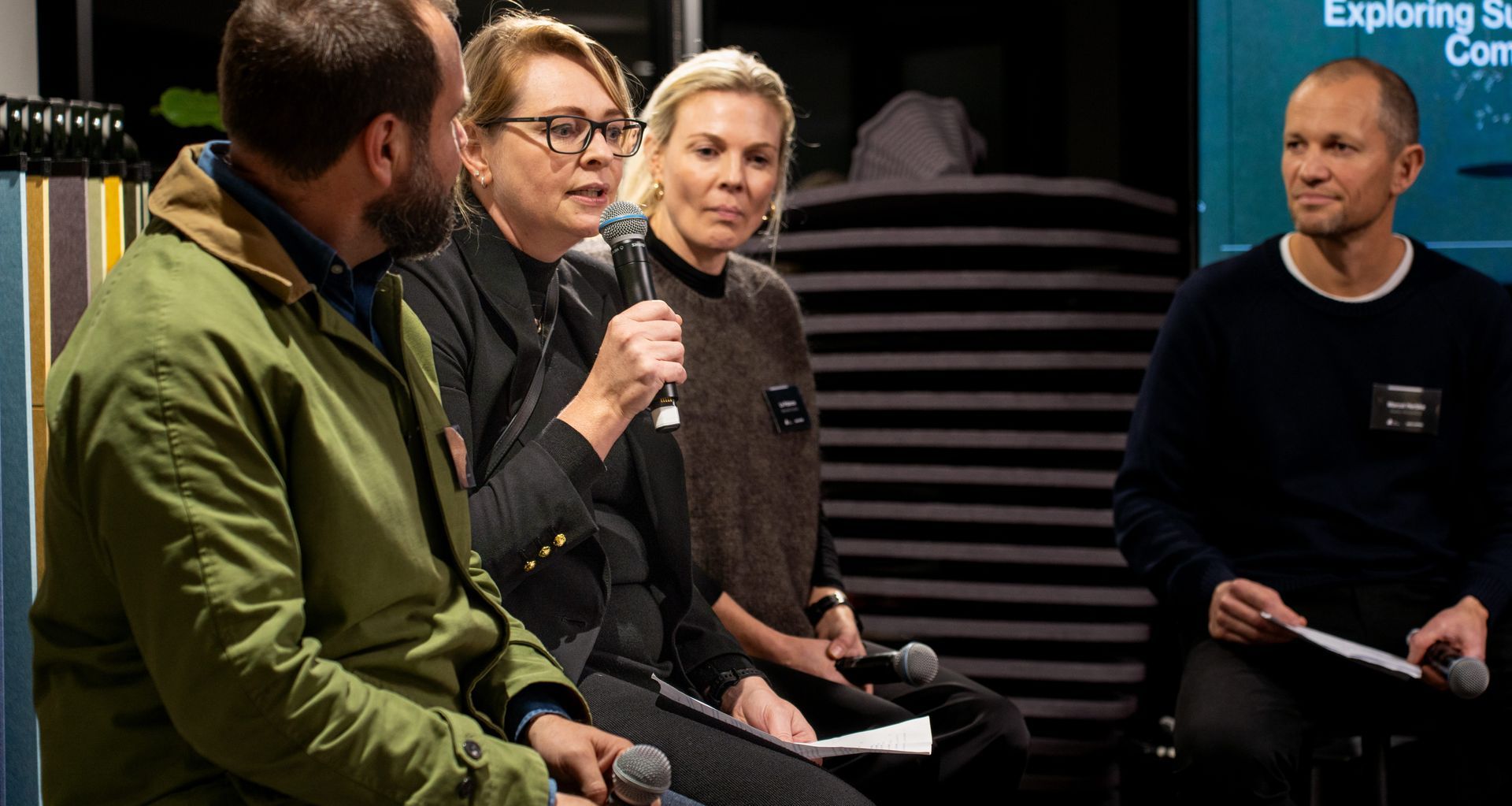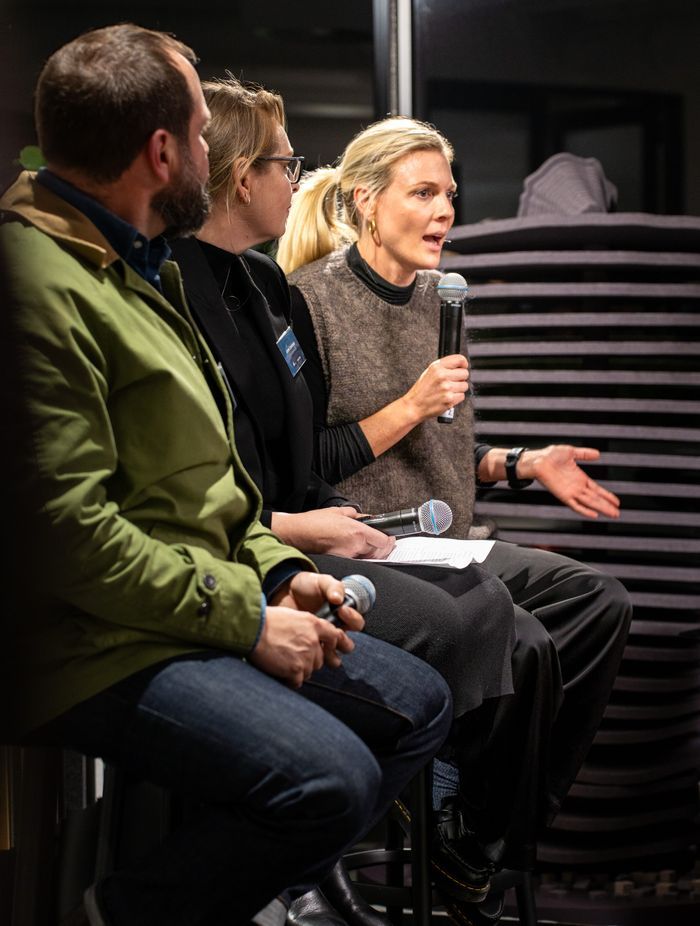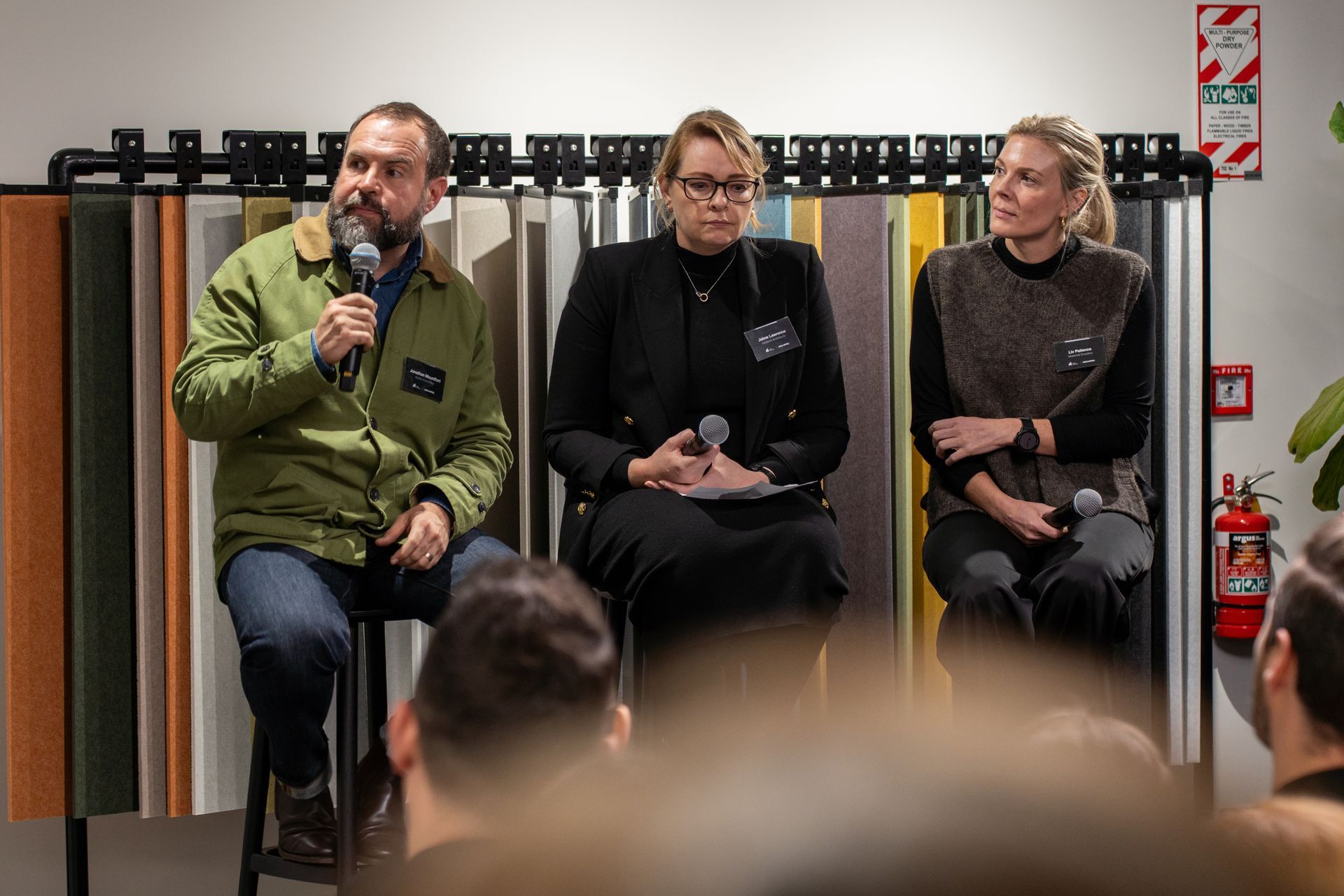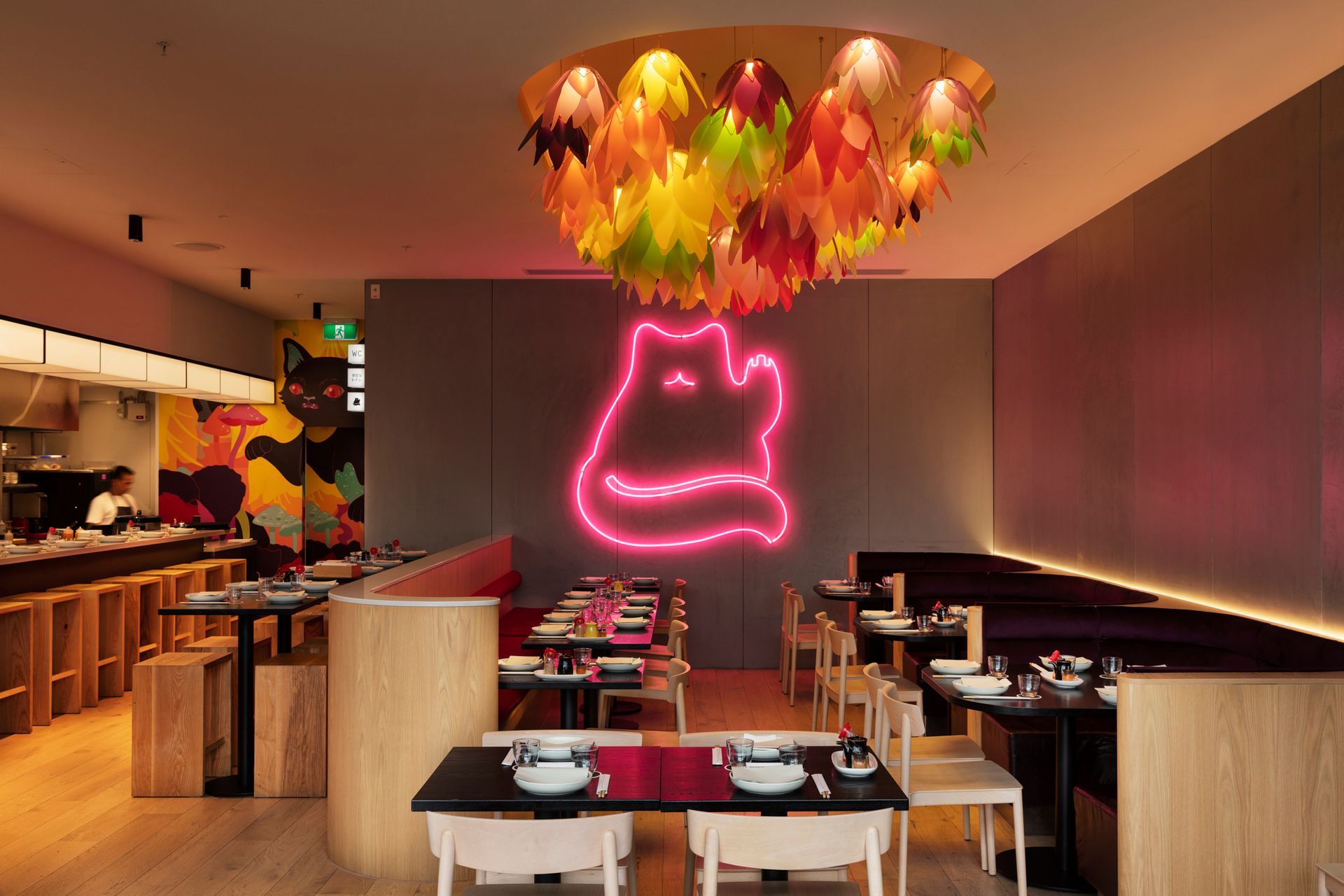Beyond the buzzwords: why circularity in design starts with curiosity
Written by
17 July 2025
•
4 min read

The room was full, the ideas even fuller. At ArchiPro’s After Five gathering with Autex Acoustics, sustainability wasn’t just a slide in a deck... it was the conversation. From the role of local manufacturing to the hidden complexity of third-party certifications, one thing became clear: circularity in design is less about perfection and more about asking better questions.
Moderated by Marcel Herbke, GM of Sales at Autex Acoustics, the panel brought together distinct voices from across the industry: Jonathan Mountfort, Creative Director at Autex Acoustics; Jaime Lawrence, Associate at Athfield Architects; and Liv Patience, Co-Founder and Creative Director at Material Creative. Together, they unpacked the tangible realities of building better, without falling for greenwashing, Pinterest trends or oversimplified checklists.


"In an ideal world,” said Jaime, “the most sustainable product is also the most beautiful. But that’s not always the case. You need to go deeper."
Local First, Then Lasting
Jonathan Mountfort opened the conversation with a firm stance... sustainability begins at home.
Autex Acoustics' ReForm™ panels, made from reclaimed content, are a case in point. But giving a product a second life brings with it a new layer of complexity, colour consistency, performance standards, and storytelling.
"It’s not enough to say something is carbon neutral,” Jonathan noted. “You have to ask... what happens to it after its life ends? Does that pathway even exist?"
From carbon footprints to the mechanics of Environmental Product Declarations (EPDs), the group explored the nuances of transparency. “Carbon is king right now,” Jonathan added, “but there’s so much more hidden in the EPD. You’ve got to look to the appendix.”
Beautiful, But Also Sensible
For Liv Patience of Material Creative, good design doesn’t compromise. Her studio’s work at Hello Beasty with natural marmolium and recycled lighting fittings reflects a commitment to both beauty and longevity. Her view? Sustainability should be tangible and felt.
"People can feel when care has gone into the material selection,” Liv shared. “If it’s thoughtful, it just feels good."

That kind of care, she explained, goes beyond aesthetics. It builds meaning. “If you’re celebrating a sustainable product, you’re giving your client a story they can be proud of. It becomes a talking point. A deeper connection to the space.”
"Sustainability is not a checklist,” said Jaime Lawrence. “It’s a system."
Systems, Not Silver Bullets
That means going beyond labels. Reading documentation. Asking how something is installed and how it will be taken down. It means involving builders in take-back programs and understanding how each decision impacts the broader lifecycle of a product.
New Zealand’s lack of deconstruction companies, Jaime noted, remains a critical barrier. “Even when we specify with longevity in mind, if there’s no end-of-life plan, it often ends up in landfill.”
She pointed to Wellington Central Library as a recent win. Originally set for demolition after the Kaikōura earthquake, the project instead retained its main structure, preserving both history and embodied carbon.
“It’s not the shiny new build people might expect. But it’s the right one.”
Education, Curiosity, and the Next 10 Years
If there was a central takeaway, it was this: stay curious.
“There is no truly sustainable material,” said Jonathan. “There’s only a sustainable system. It’s about what the product has been, what it’s becoming, and what it could become in future.”
Autex Acoustics' Embrace™ Wall System demonstrates that future: a carbon-negative product built to degrade naturally. But the real shift, Jonathan stressed, will come when the industry embraces circularity at scale, requiring not just innovation, but infrastructure.
"We need more than consultation. We need deconstruction. We need manuals for end-of-life. And we need local solutions."
The Takeaway?
There’s no silver bullet. But there is momentum. From sourcing locally to selecting with integrity, the most exciting ideas aren’t always shiny or new. They’re systems-driven, emotionally resonant, and built to last.
If we’re thoughtful, if we’re interested, we’ll learn. And when we learn, we make better choices.
We’re entering an age where the story behind a material matters just as much as its specification. And that’s a future worth building toward.
